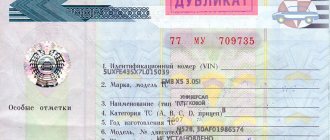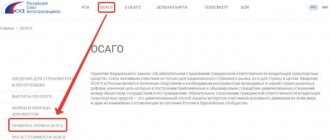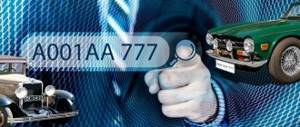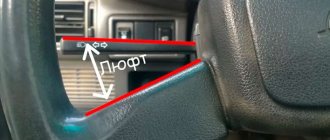Motor vehicle accidents account for a significant proportion of deaths in the country. The causes of accidents can vary, but most of them are due to vehicle malfunctions. To reduce accident rates and road safety, motor transport companies are required to conduct regular technical inspections.
Let's consider the procedure for conducting pre-trip monitoring of the technical condition of a vehicle. Let's find out who in the organization is responsible for inspections and issues an opinion on the technical condition of vehicles. We will also analyze the procedure for filling out reporting documentation and types of technical control of vehicles.
Checking the technical condition of the vehicle - features
Checking the technical condition of vehicles is carried out in all companies that have vehicles on their balance sheets. The management of the enterprise must take care of the existence of a mandatory procedure.
The check takes about fifteen to twenty minutes. It does not take place at service stations, but on site - that is, in a garage or in a company parking lot. There are two types of control. Let's look at each of them in more detail.
Pre-trip
This is an examination of the technical condition of the vehicle before sending the car on a flight. Manipulations are carried out before the equipment leaves the base. Upon completion of the diagnosis, the responsible person makes sure that the vehicle is fully operational and ready to hit the road.
Post-voyage
Another form of daily monitoring. Technological indicators and wear during operation (during long trips) are checked. Based on the results of this type of control, the technician sends the car to the parking lot or prescribes a more thorough diagnosis.
Daily vehicle maintenance
This is a preventive measure that allows you to identify problems in time and prevent serious breakdowns.
Daily vehicle maintenance.
When conducting monitoring, the employee responsible for the technical condition of the vehicle must pay attention to the following points:
- condition of the brake system;
- wear of axles, wheels and tires;
- integrity of the body part, headlights, wipers, glass;
- condition of pumps and generators, batteries, hydraulic parts;
- oil and fuel levels, no fluid leaks;
- filter condition.
You also need to monitor the cleanliness of the car and blow out the components in case of dust.
What vehicles must be inspected?
Paragraph 2 of Article 20 of the Federal Law “On Road Safety” states that vehicles belonging to legal entities and individual entrepreneurs that transport passengers or cargo must undergo technical control.
However, we are not necessarily talking about commercial transportation. If a vehicle transports cargo for the organization’s own needs or transports at least one person other than the driver, then it must undergo pre-trip or pre-shift control.
The requirement applies to all types of vehicles:
- passenger cars (only for commercial transport),
- trucks (for commercial transportation and transportation for own needs),
- buses (for commercial transportation and transportation for own needs).
Who carries out the control
The procedure has the right to be carried out by a full-time auto mechanic or a specialist hired under a contract. The first option implies a separate position in the enterprise. The director can send an existing mechanic for special training. In this case, it is important to ensure that the equipment necessary for control inspections is available.
In the second option, the company enters into an agreement with a service provider. The master comes to the garage as needed.
Requirements for a car going on a trip
Only a serviceable vehicle that has undergone repairs may be used.
Before setting off, you should pay attention to:
- smooth operation of brakes, gearbox, steering relay;
- clearly functioning battery;
- permissible tire pressure;
- serviceability of the clutch system, absence of extraneous noise when the vehicle is operating;
- horn signals, headlights;
- the presence in the body of a complete first aid kit, tools, fire extinguisher, jack;
- no oil or fuel leaks.
At his discretion, the consultant monitors other characteristics.
Requirements for the controller
A person with appropriate education can monitor the technical condition and equipment of vehicles. The required level is at least secondary specialized. According to regulations, a mechanic must have a certificate of conformity. After completing the training, the certificate is issued by the transport inspectorate.
If a traffic police officer insists on a technical inspection
Any control of the technical condition of the vehicle can only be carried out at stationary posts. Stopping without sufficient grounds (lack of license plates, obvious breakdowns) is prohibited. However, motorists may encounter a situation when a traffic police officer begins checking the units after stopping the car. Having identified a malfunction, the inspector insists on issuing a fine, justifying his actions with the “List of malfunctions and conditions under which the operation of vehicles is prohibited” (Section 2.3.1 of the Traffic Regulations). The document states that the driver is obliged to check the car before leaving and ensure safe operation on the road. However, the same list notes that the occurrence of malfunctions on the road does not provide for punishment if the car owner eliminates them or goes to the place of repair. If the inspector nevertheless draws up a report, then the receipt from the service station will be a weighty argument in court. When signing the protocol, the driver has the right to indicate that he does not agree with the accusation, since he should go to a service station (write down its address). The requirement of the traffic inspector to proceed to the station for a technical inspection may be advisory in nature; the driver has the right to refuse if he has a valid diagnostic inspection card.
Sample control procedure
The procedure for conducting inspections of the technical condition of vehicles is enshrined in the road safety instructions; recommendations can also be obtained from the Ministry of Transport.
The control plan includes a list of manipulations, the main ones look like this:
- study of the appearance of equipment;
- checking the body, driver's cabin, signals, lights, brakes, battery;
- control of the main systems: air suspension, steering, clutch, engine;
- checking axle parameters, integrity of hoses, turn signals;
- analysis of wheels, tires, bumpers.
Let us remind you that the driver is present when drawing up the inspection report.
Note that operational control can be carried out in a number of areas. Which way to go is decided by the person in charge. The amount of manipulation directly depends on the condition of the machine and its type. Let's consider the possible options in more detail.
Types and scope of checking the technical condition of a vehicle
Technical control is divided into visual and manual. The technician uses the second option if a specific part or system is suspicious. A diagnostic map using some diagrams - that is, bypassing the official expert opinion. Such “tricks” threaten the company with fines from the traffic police, and also increase the risk of accidents. Let's return to the “white” schemes.
Verification methods
Technical control (pre-shift and post-trip) is divided into a full inspection and monitoring of a specific system. A full inspection, required by orders of the Ministry of Transport, is designed to ensure road safety and control all components of the vehicle. Partial inspection is used when one of the systems breaks down or malfunctions. Let's look at the nuances in each machine system.
Brake systems
Checking the brake system.
Brakes are one of the main parts of the vehicle, responsible for the safety of the driver and others.
When inspecting them, the following problems may be revealed:
- reduced system efficiency;
- jamming, interruptions;
- fluid leak;
- failure of brake lights.
If the above is detected, the car is sent for a detailed examination.
Steering systems
Failures here can be like this:
- control jamming;
- violation of adjustment of parts.
The car is also sent to a repair station.
External lighting devices
When inspecting the headlights, a technician may find:
- contact closure;
- Malfunctions of the rear/front lights.
The vehicle is not allowed on the road until the situation is corrected.
Wheels and pneumatic tires
The fastening and external condition of the “shoes” of the vehicle are checked. If necessary, place the car on a jack and tighten the nuts. Rubber damage, bumps, different tread patterns, and worn tires are unacceptable.
Engine and its systems
The engine is the “heart” of the car. Its operation is checked at full and low speed, as well as at idle. An increased concentration of smoke, its entry into the driver’s cabin, and clutch failure are reasons to send the equipment to the station.
Other structural elements
The mounting of the tractor with the semi-trailer, stable mounting of mirrors, canopies and license plates are subject to detailed inspection.
The mechanic also rules out deep dents, damage to the platform, and cracked headlights. If the inspection reveals the above, the parts that have become unusable are replaced and the fastenings are adjusted.
Verification Tools
For full maintenance in the garage, organizations must have:
- several types of jacks (for each type of equipment);
- pressure gauge for checking wheels and tire pressure;
- hammer with a long handle;
- sets of tools (wrenches, nuts).
In large companies, it is advisable to supply equipment for computer diagnostics.
Schedule
The frequency of inspections is fixed in the Regulations on Road Traffic Safety, and the inspection plan is also described there.
The technician inspects the machines before each trip to the line. Otherwise, all participants (driver, company, controller) receive penalties.
Documenting results
Documenting the results.
The monitoring results are recorded in the logbook. A sample document can be found in the public domain.
An example of the required graphs is:
- make and model (truck, passenger) of the vehicle;
- state number of the car;
- brief information about the driver;
- inspector data;
- time/date of recording the technical condition;
- odometer data, mileage;
- a note about passing a technical inspection;
- signatures of the inspector and the driver.
Also, the results of the inspection are included in the “travel book”.
What is the technical condition of the car?
Description: It happens: The serviceable condition of a car is a condition in which it meets all the requirements of technical specifications and design documentation. The faulty state can also be divided into: The operational state of the car is a state in which it is capable of performing certain work with the parameters specified in its technical characteristics. The limiting state of a vehicle unit or part is a state in which it is no longer acceptable to operate them.
Date added: 2015-01-08
File size: 126.23 KB
The work was downloaded by: 123 people.
Share your work on social networks
If this work does not suit you, at the bottom of the page there is a list of similar works. You can also use the search button
The technical condition of a car is a condition characterized by the totality of its operational properties that change during operation, measured and quantified.
- The serviceable condition of a car is a condition in which it meets all the requirements of technical specifications and design documentation.
- A faulty car is a car that contains mechanisms, instruments and assemblies that are faulty or do not meet the requirements of technical specifications and design documentation.
The faulty state can also be divided into:
- The operational state of a car is a state in which it is capable of performing certain work with the parameters specified in its technical characteristics.
- An inoperable car is a car that cannot be used for its intended purpose due to breakdown of parts or malfunctions of its devices or assemblies.
- The limiting state of a car, unit or part is a state in which it is unacceptable to operate it further.
Technical maintenance is a branch of knowledge that studies ways and methods of maintaining equipment in good condition at reasonable costs.
A schedule that determines the time of Maintenance depending on the mileage:
Technical operation, as an area of applied activity, is a set of engineering, organizational and economic measures to maintain equipment in good working order.
Factors influencing the speed of the vehicle's technical condition:
1. External (these include violation of traffic rules, vehicle operation, accidents);
2. Internal; they are divided into:
- constructive (errors during design);
- technological (incorrect part manufacturing technology or incorrect assembly technology);
- material defects;
There are also factors: random and permanent;
The improvement of highways and the gradual adaptation of the human body to moving at ever greater speeds make it possible to achieve enormous speeds. Developments in automobile design would seem to confirm this view. Over the course of the twentieth century, the maximum speed of a passenger car increased from 30–40 to 120–200 km/h; racing from 100 to 300 km/h, and record cars have achieved speeds exceeding 1000 km/h. The highest speed of domestic cars has doubled from 40-50 to 85-100 km/h, the speed of intercity buses is steadily approaching the speed of a passenger car.
The speed allowed in cities, taking into account safety requirements, has also tripled. The increase in speeds with all its severity constantly confronted motorists with one problem after another - the need for effective braking of the car, stabilization of the wheels, handling, post-accident and environmental safety; each time a radical revision of the design of the car was required, other methods of controlling it and, in parallel, a significant change in traffic conditions and road quality and traffic management, introduction of new rules, organization of technical maintenance.
The car has reached a level of perfection where it rarely refuses to obey the driver's commands. Man, although he has developed physically and spiritually, has retained his reaction speed at almost the same level. While a person is young, his reaction is faster, but he is susceptible to the excitement of competition, carried away by speed. When he gets older, his reaction slows down. But at any age he is influenced by: lighting conditions, climate, joys or sorrows experienced shortly before driving a car, food and medicine consumed, not to mention alcohol; It is important to note that more than half of road accidents are caused by drivers.
Road safety has become the number one problem in Russia. Cars were created for the benefit and joy of people, but their development was so rapid and went in such a direction that it came into sharp conflict with the development of cities and roads, with the psychophysiological capabilities of people, with the necessary fuel and other resources. Traffic safety depends on many factors. The driver can only influence the driving performance of the car - which, however, is very significant, while all other factors directly or indirectly influence its movement.
The technical operation of vehicles determines the following factors in the transport process:
1. Material costs for maintaining the vehicle in working condition. In total, about $1 billion is spent annually in Russia on maintaining cars in working condition, in the USA - about $25 billion, in the world - about $80 billion. According to the American Automobile Association (AAA), the average annual cost of operating a car in the United States is $1,700.
2. Labor costs. The structure of labor costs over the entire life of a car is determined by the following ratio: manufacturing - 2%, TEA - 91%, overhaul (CR) - 7%. The labor intensity of manufacturing a car in Russia is about 150 standard hours, while due to the aging of vehicle fleets, the labor intensity of maintenance, routine repair (TR) and major repairs (CR) exceeds 1000 standard hours. Currently, more than 1.5 million people are employed in the field of thermal energy in Russia.
3. Harmful effects on humans and the environment. The environmental friendliness of a car is determined by the quantity and composition of exhaust gases (EG) (the most harmful are CO, CnHm, NOx and benzopyrene, as well as lead for leaded gasoline), noise, vibration, and spent technical fluids.
4. Road safety. Every year, about 27-30 thousand people die due to the fault of road transport in Russia, and about 50 thousand in the USA. On average, for every 200 thousand km of travel, a driver gets into an accident with serious consequences.
Technically faulty cars are the cause of about 10% of road accidents, including those due to malfunctions:
— brake systems — 41.5%;
— steering — 16.4%;
— lighting devices — 7.9%;
— chassis — 6.6%;
— mirrors and cleaners — 7.8%,
5. Consumption of fuel and energy resources. Their main source for transportation is oil, where about 70% of fuels of petroleum origin are consumed from the total costs of the transport complex. According to forecasts, illiterate technical operation of vehicles causes one and a half excess consumption of fuel and energy resources.
conclusions
Monitoring the technical condition of vehicles is a mandatory requirement for the carrier. A certified mechanic is responsible for the inspection. Control is carried out on the territory of the organization, its data is entered into the accounting books. Inspections must be carried out before each vehicle is put on the road.
The mechanic has the right to carry out full or partial control, manual or limited to visual. However, you need to remember that if the driver violates traffic rules or gets into an accident, not only the driver, but also the technician will be responsible for the incident.
A mark indicating a successful inspection is also placed in the travel document. Documents should be kept in archives for at least five years. For violation of inspection regulations, inspection authorities have the right to apply penalties. The company will have to pay up to thirty thousand rubles to the state treasury.
Detailed information is visible in the video:
Legal framework governing the issue
According to the Appendix to the Order of the Ministry of Internal Affairs No. 297 “On approval of the manual on the work of the traffic police service of the State Traffic Safety Inspectorate of the Ministry of Internal Affairs of the Russian Federation” dated April 20, 2010, checking the technical condition of cars that have undergone maintenance in a timely manner is not allowed. At the same time, a number of articles of the Code of Administrative Offenses provide for punishment for technical malfunctions of the car (brakes, steering, headlights, etc.). Thus, fines for defects are provided, but inspection of technical condition is prohibited. The situation was clarified by Appendix No. 1 to Order No. 1240 of the Ministry of Internal Affairs of the Russian Federation (lost force in 2014, but is valid insofar as it does not contradict the Code of Administrative Offenses of the Russian Federation). According to this document:
- Monitoring technical condition is permitted only at stationary control posts and checkpoints;
- It is allowed to stop and inspect route buses on the territory of bus stations, terminal stations and passenger stops;
- You can stop a car to check its technical condition if there are no registration plates or they are not legible.
Also, the basis for stopping is the presence of malfunctions in which the use of the car threatens road users and the car owner. At the same time, an employee can notice a breakdown of the brakes, steering wheel, headlights, or windshield wipers (in snow or rain) while the car is moving. As a result, the stop will be lawful, as will the issued fine or more serious consequences. However, drivers are often stopped and the problem is detected on the spot. This procedure violates the order, so any sanctions can be challenged.











